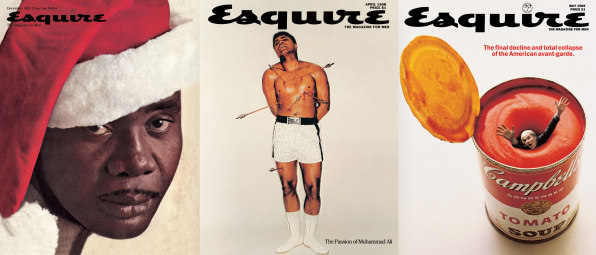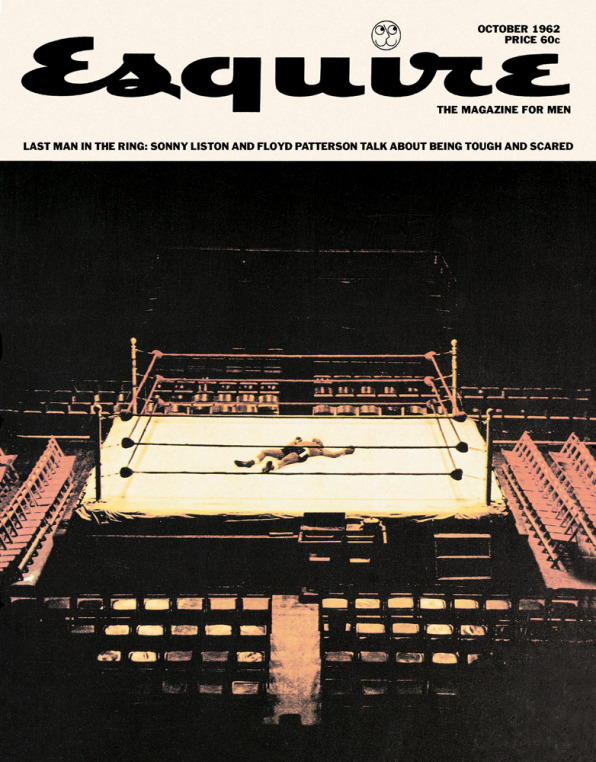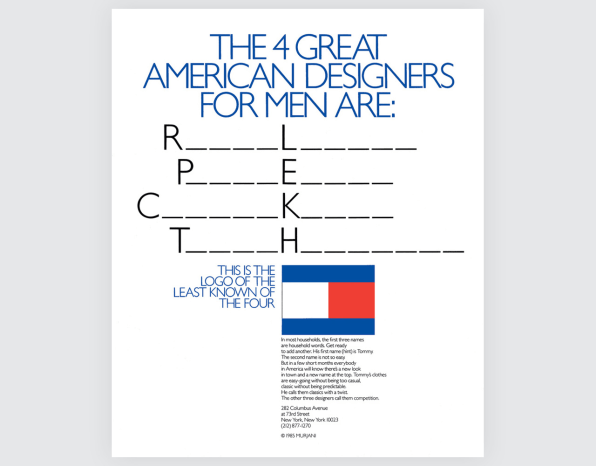The iconic designer didn’t mince words in a recent interview, arguing that technology is “helping to destroy creativity in advertising.”
Back in the 1970s, the average American was exposed to between 500 and 1,300 ads per day. But today, that number is probably closer to 5,000. That’s a lot of ads, and it’s up to designers to help products stand out in this ever-intensifying attention economy.
That’s no small task. But George Lois–who will be a judge in this year’s Innovation by Design awards–has managed to cut through the noise with some of the most culture-shaking campaigns of the last 50 years. He catapulted designer Tommy Hilfiger onto the world stage with one ad. He figured out how to sell Xerox copy machines to a skeptical public–with a chimpanzee. He helped turn around struggling networks like ESPN and MTV, creating the iconic ad with Mick Jagger declaring, “I want my MTV.” On the side, he created dozens of magazine covers for Esquire, some of which are now in the Museum of Modern Art’s permanent collection.
I recently chatted with Lois about how to create design that stands out from the crowd, from magazine covers to national advertising campaigns.

Fast Company: Your magazine covers for Esquire are now in the Museum of Modern Art. What was your process for creating such iconic images?George Lois: In 1962, the editor in chief of Esquire called me up and asked to meet me for lunch, and he asked me, could you help me do better Esquire covers? I’d never done a cover in my life. I gave him a hard time. He said, “Please do me a favor, can you do me one cover?” The next cover was due in three days. He explained a story about this and that. One of the things he said was, we also have a photograph of Floyd Patterson, the heavyweight champion of the world. I said, I’ll deliver the cover to you in the next two days. He thought I was crazy. I understood that Floyd Patterson was going to get his ass kicked.

I’m the only person in America who believed so. Las Vegas had a 12 to 1 favorite for his match against Sonny Liston. I got someone who looked like Floyd Patterson, took a photo of him laying in a middle of a rink, empty, the whole stadium all gone. That was the visual. It was me calling the fight, saying to the sports world that Floyd Patterson was going to get knocked out. Nobody at Esquire liked the visual, but the editor ran it anyway. When it came out, everyone ridiculed it. But three or four days later, the fight took place and Floyd Patterson was knocked out in 60 seconds. It was a gigantic success, the fact that Esquire called the fight.For the next 10 years I did Esquire covers, something like 90 covers. I decided what the topic was going to be. They’re in the Museum of Modern Art’s permanent collection. They’re world famous. I was doing that as I was doing all my advertising.
FC: Do you think magazine covers still are as powerful as they once were in shaping national conversation?
GL: They’re ridiculous. They’re trash today. And they have been for a long time. They got a photograph of maybe a well-known person, they have tons of type, with six or seven stories on the cover. It’s a disaster.
Some people have said, “But there’s so many more magazines now than then.” I say, “If you took any one of my covers than I did today and you put them on a newsstand along with the others, my cover would leap out and grab you by the throat.” In doing Esquire‘s covers, their sales went from 200,000 to over 2 million.
FC: Do you think Trump has revitalized magazine cover art?
GL: It’s a hell of a subject matter. The New Yorker did a lot of terrific covers of Trump that Barry Blitt drew. New York did a good cover showing Trump as a pig. There have been some covers where passionate work was done attacking this demagoguing terrible man who’s supposedly our leader–you’re right about that.
FC: What do you think of branding and the advertising industry today?
GL: It’s so terrible that if you spoke to any of the young talented people at the agencies today, away from their boss, they would cryingly tell you how pitiful their work is. It’s a new age of technology and somehow the technology is supposedly helping to reduce the work, but it’s helping to destroy creativity in advertising. The situation with the whole field of advertising is just as bad as with the magazine covers.

FC: If everything right now is so broken, what is good design?GL: Of course I’m a designer, but I don’t call myself a designer. I’m a mass communicator. For an Esquire cover, I wanted to show Muhammad Ali as a martyr, so I showed him as St. Sebastian, tied up with arrows in his body. That’s it. I take my ideas and show my ideas without using any fussy design. I’m very unusual for that because most people design: They draw lines and do everything around it. Not me. The work is pure, simple, completely understood in a nanosecond. All my work sells. When I do Esquire covers they sell.
I don’t talk about design, I talk about ideas. You have to come up with a big idea that can change the world. I put the idea down, like “I want my MTV,” and I don’t discuss designing. Because I don’t design it, I just show the idea.
It sounds mystical, but I always say I don’t create big ideas, I discover them. If I know enough about what the product is, and what their competitors have done, then I know there’s a big idea out there and I discover it. I get the idea and the second I do it, it’s obvious.
I try to teach young people not to do what everybody does in advertising: They have important people strategize, and their strategy is usually unambitious. And I say if you can instead just follow your own instincts and come up with an idea, you’ll be able to do advertising that saves business and creates new brands.

FC: What are the biggest challenges facing design and branding right now?GL: I see young people working on something at their computer, and I say, “What are you working on?” They’ll say, “Looking around.” I say, “There’s nothing in the computer! It’s a dumb brute. Go into the bathroom, look in the mirror and work with yourself. Come up with a big idea with your own talent. Use your own brains.” I try to teach young people to use their own instincts and brains and talents and not get trapped into what cover designers and ad agencies do when they come up with advertising–they do it in big groups. The only thing where you need a big group of people to do something is when you’re building an Amish barn.
I call it “group grope.” In American and world business, people work in teams. It’s nonsense. They get four or five people and they say, solve that problem. That’s the way everybody does it. It doesn’t work. You have to have individual talent.
It’s called creativity. People don’t think creatively. What you have to understand is advertising and creativity is not a science, it’s an art. I’m a lone wolf, that’s the way I work. I get 30 emails a day from people all over the world and 95% of them thank me for getting them to start thinking with their own brains. Sit in a room and don’t come out until you have one great idea that changes the world.
–
This article first appeared in www.fastcodesign.com
Seeking to build and grow your brand using the force of consumer insight, strategic foresight, creative disruption and technology prowess? Talk to us at +9714 3867728 or mail: info@groupisd.com or visit www.groupisd.com



